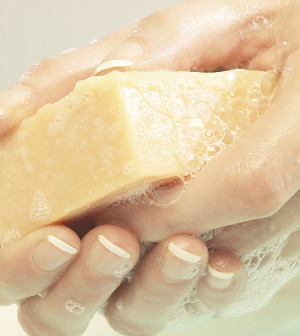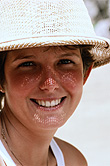- Skip Storing This Everyday Product in the Fridge Door
- Green Tea + B3 Pairing May Boost Brain Health
- Navigating Your Midlife Crisis: Embracing New Possibilities
- City Raccoons Showing Signs of Domestication
- Mapping the Exposome: Science Broadens Focus to Environmental Disease Triggers
- One Week Less on Social Media Linked to Better Mental Health
- Your Brain Changes in Stages as You Age, Study Finds
- Some Suicide Victims Show No Typical Warning Signs, Study Finds
- ByHeart Formula Faces Lawsuits After Babies Sickened With Botulism
- Switch to Vegan Diet Could Cut Your Greenhouse Gas Emissions in Half
Most Americans Still Not Using Sunscreen


Most Americans still don’t regularly use sunscreen to help prevent exposure to the sun’s cancer-causing rays, a new study reveals.
When used as recommended, sunscreen has been shown to reduce risk for all types of skin cancer and prevent or delay signs of aging, the researchers explained. But their 2013 survey found only 14 percent of men and 30 percent of women regularly use sunscreen both on their face and other exposed skin.
The study also showed that more than 40 percent of men and 27 percent of women never use sunscreen on their face or other areas of exposed skin when outdoors for an hour or more.
Women are probably ahead of the game since many face creams contain sun protection factor (SPF), said Dawn Holman, a behavioral scientist at the U.S. Centers for Disease Control and Prevention and lead author of the study.
But even if they are more knowledgeable and diligent about using sun protection, more work is needed to educate both women and men about the harms of excess sun exposure, said Dr. Deborah Sarnoff, vice president of the Skin Cancer Foundation.
The overwhelming majority of melanomas — the deadliest form of skin cancer — and non-melanoma skin cancers are associated with exposure to ultraviolet (UV) radiation from the sun, Sarnoff said.
That’s why daily sun protection is critical, she said.
The Skin Cancer Foundation recommends adopting a complete sun protection regimen. “That includes seeking shade, covering up with clothing, including a broad-brimmed hat and UV-blocking sunglasses, in addition to daily sunscreen use,” Sarnoff said.
Dermatologists generally recommend sunscreen that is broad-spectrum, has an SPF of 30 or higher and is water-resistant.
“It might also be a good idea to check the expiration date, just to make sure it won’t expire before you plan to use it,” added Holman.
The new study, published in the May issue of the Journal of the American Academy of Dermatology, also found that nearly 40 percent of sunscreen users were unsure whether their sunscreen provided broad-spectrum protection.
Broad-spectrum means that the sunscreen protects the skin from both UVA and UVB rays. UVB rays are responsible for sunburns, while UVA rays go deeper into the skin, causing sagging and wrinkling. It is believed that both UVA and UVB rays play a role in skin cancer.
“To take advantage of the full protection your sunscreen offers, it should be applied thickly to all exposed skin and reapplied every two hours and after swimming, sweating, and toweling off,” Holman recommended. “Sunscreen is most effective when paired with other forms of sun protection.”
The researchers, who questioned about 4,000 adults, found sunscreen use was lower among lower-income groups, those with less sun-sensitive skin and blacks.
Some people may also shy away from sunscreens because they fear the chemicals in them, the study authors suggested.
“Sunscreens have ingredients in them that either absorb or reflect UV rays from the sun,” Holman said. “The sunscreens available in the U.S. are safe and effective. For consumers who have sensitivities to or concerns about ingredients in sunscreens, products that use physical blocks, such as titanium dioxide and zinc oxide, are available.”
Holman suggested a couple of other strategies to stay sun safe.
“Check the UV index before heading outdoors,” she said. “The UV index is available online and is also often provided as part of your local weather forecast. The higher the UV index, the more sun protection you will need.”
She also suggested trying to schedule your outdoor activities to avoid midday sun exposure, when the sun’s UV rays are most intense — between 10 a.m. and 2 p.m.
Skin cancer is the most common cancer in the United States, according to the CDC. The most severe form, melanoma, causes more than 9,000 deaths a year in the United States.
More information
The American Cancer Society has more on staying sun safe.
Source: HealthDay
Copyright © 2025 HealthDay. All rights reserved.










